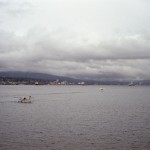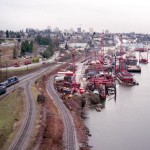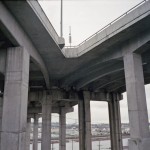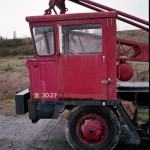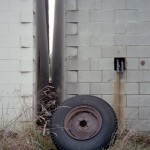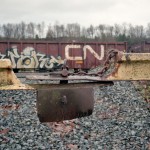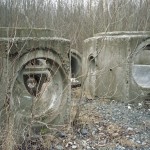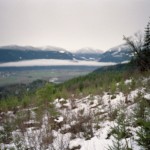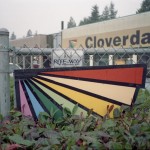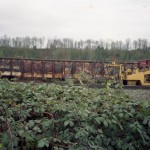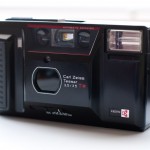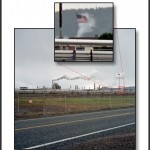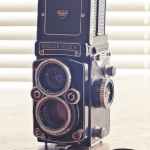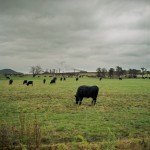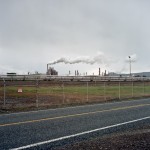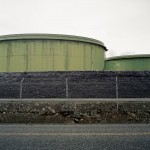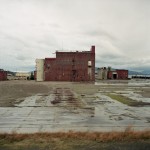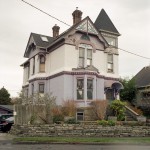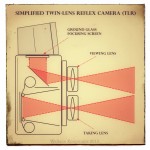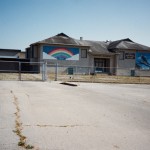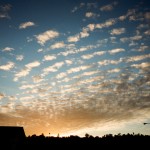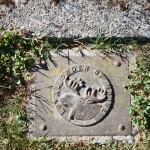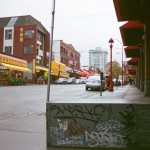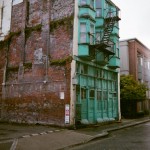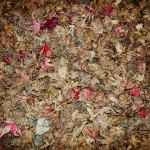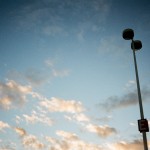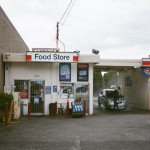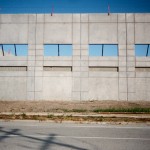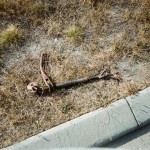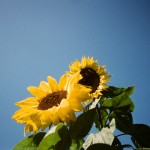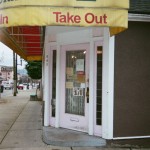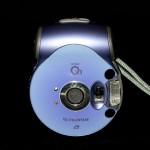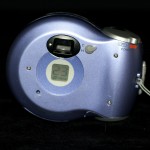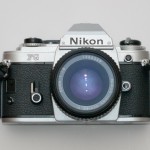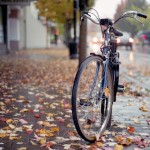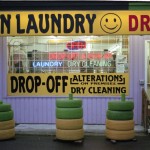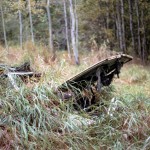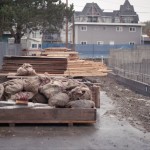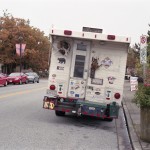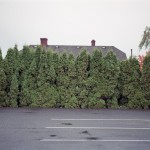Feb
8
2013

Well this is a very different post than I thought I would be writing. You see there were only 2 frames left on the roll of film I was shooting when I lost this camera. I’m more annoyed at the loss of images from the last few weeks than of loosing the camera. For that matter it bothers me more to loose the battery than the camera those CR2 batteries are expensive.
1 comment | posted in Photography
Feb
6
2013
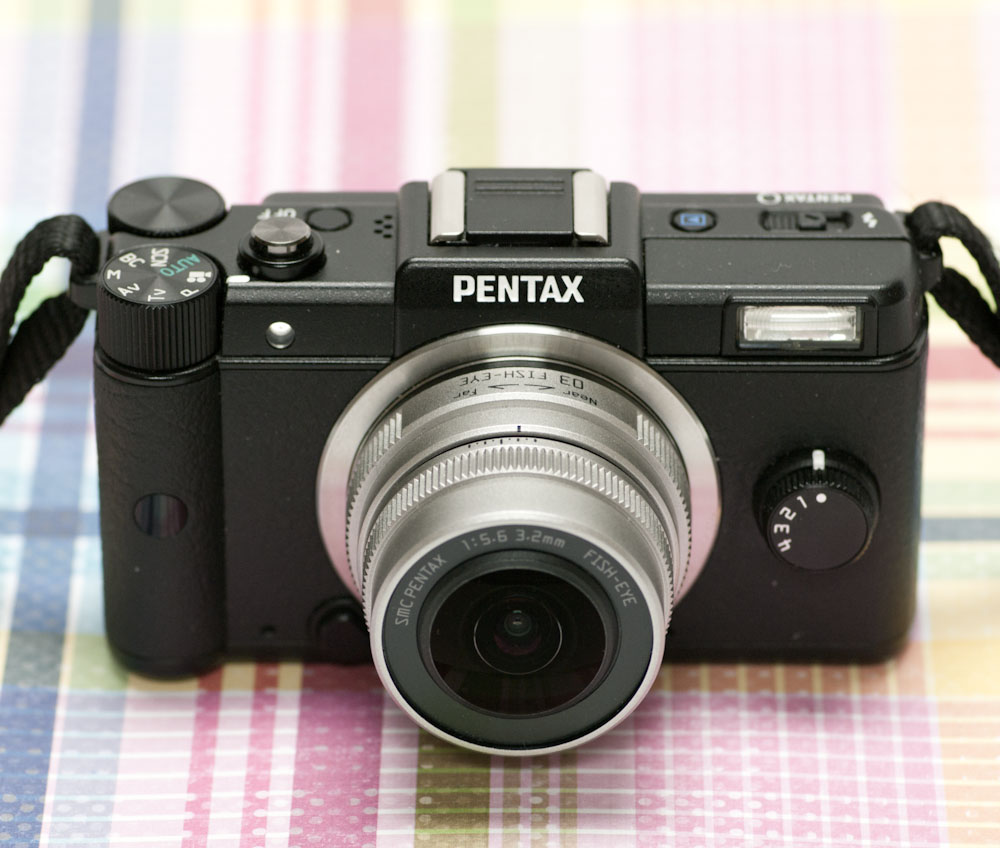
While a fish-eye lens is not something you would want to use too often. Much like a hammer isn’t always the right tool, there are times when it is. What really distinguishes this camera lens combination is the fact that it fits in a coat pocket.
Focusing is completely manual and instead of a distance scale there are tiny division marks. Because of the ability to focus from mere inches to infinity while only turning the focus ring about 30 degrees it can be challenging to achieve sharp focus. Using the zoom in while focusing feature of the camera aides this greatly. For other lenses with shallower depth of field, focus peaking is great but with this lens it is not as useful. I also find it a draw back that the lens can be turned past infinity focus, in fact infinity focus is reached at only 3/4 of the total movement. It seems to be best to leave the focus set near the infinity setting and only make adjustments for extreme close ups.
My biggest problem while using this lens though is that I constantly ruin shots by including my hands in the image. It’s so small that it is easy to find after the fact a finger sausage in an image corner. Moving my hands is something I still need to train myself to do after focusing.
7 comments | posted in Cameras
Feb
4
2013

Previously on the Fuji DL500 Files: Our hero was uncertain of the quality from this optical oddity. In this episode it becomes much clearer that the lens performs best at 45mm despite the flare it causes and that the 28mm setting is a poor performer. As the 45mm focal length is achieved by swinging an additional optical group into the light path it is apparent that the central area of the lens is fine, it is the outer corners at which the wide setting fails. After only two episodes the Fuji DL500 files are cancelled.
I’m not quite sure how but according to the Technical Image Press Association it won the award for best 35mm compact camera in 1991, perhaps they never actually took any pictures with it.
8 comments | tags: film, Fuji | posted in Cameras, Photography
Feb
1
2013
Look ma, it’s a mirrorless camera!
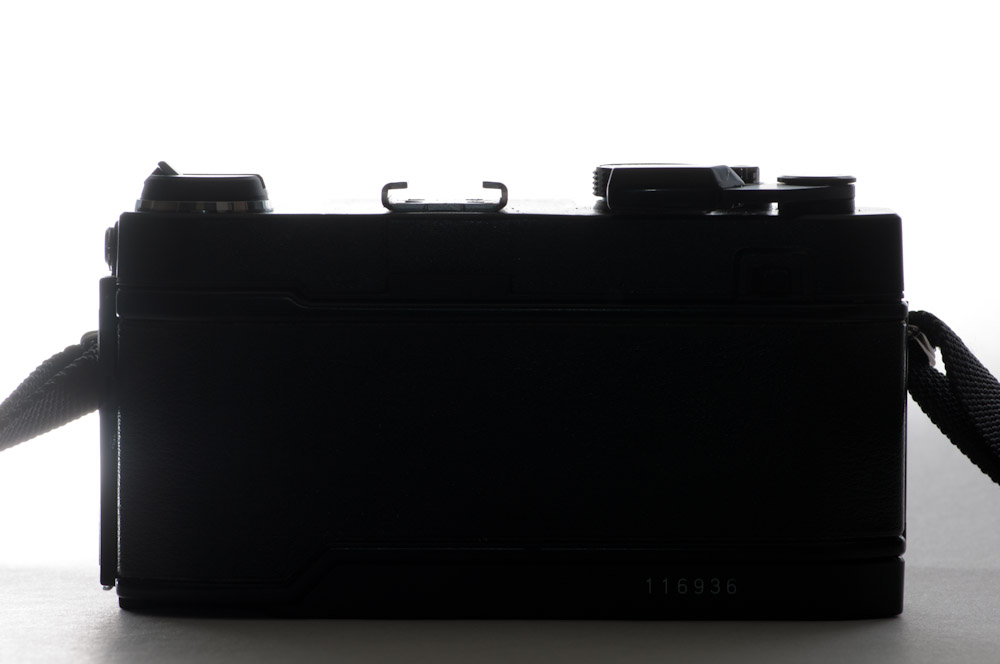
I picked up this Konica Autoreflex TC for a mere $5 due to its broken mirror. That wasnt a problem because I only wanted it for the lens which was also damaged. The Lens was twisted such that it couldn’t be focused. After repairing the lens I figured why stop at that, so I removed the broken mirror and its mechanisms, the metering and prism. Not wanting to leave a gaping hole (not sure but that might let light in) I cut and shaped pieces of plastic and rebuilt the top plate to be flat across the top like a rangefinder. only now the camera has absolutely no viewfinder. Luckily I had a broken Konica X15 flash that I cut and shaped into a case for a viewfinder. and as you might guess I had previously taken a viewfinder from a broken point and shoot. I really see little point of a how-to because it’s a matter of taking whatever you have on hand and adapting it to a new purpose. I will say though you can accomplish quite a bit with patience and little files.
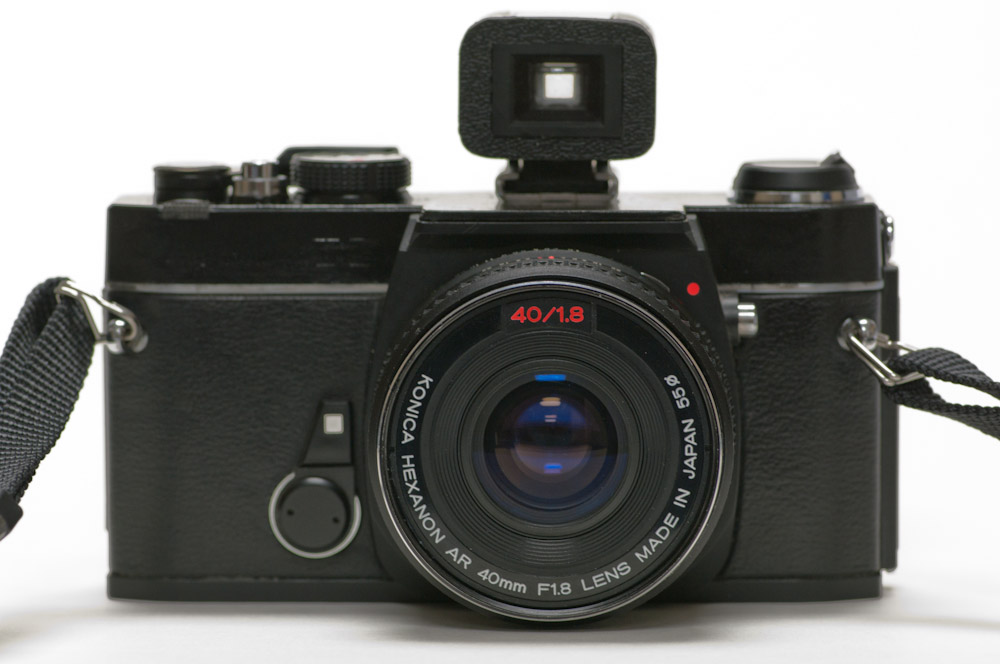
This is all possible because the cameras is completely mechanical and doesn’t require any battery power or metering to operate.
To recap I’ve gone from an SLR with a viewfinder and metering to a….scale focus….thing….with an external viewfinder….thing. Now I’ll run a roll of film through it and see if it works.
6 comments | posted in Photography
Jan
30
2013

I had hoped for better results from the Yashica T AF with its 35mm Carl Zeiss T* optics but I was unfortunately let down by the focus system. My copy no longer focuses to infinity. The reason for my optimism came from several factors beyond the lens; It has a manual ASA setting that can by easily used as a rudimentary exposure compensation system, it only fires the flash when you activate it rather than defaulting to on like so many other point and shoot cameras including the fantastic Yashica T3. Aesthetically I like the camera too for its angular glossy plastic and smoked glass lens cover that swings away to reveal the lens for each exposure, this all seems like it could only have sprung from the early 1980’s.
Back to my copy of this camera, only where I pointed the camera at nearby objects did it achieve correct focus, so all the shots into the distance are out of focus. Oh well I will mark the camera with a tag of shame and put it into the parts bin.
5 comments | tags: film, Yashica | posted in Cameras, Photography
Jan
23
2013
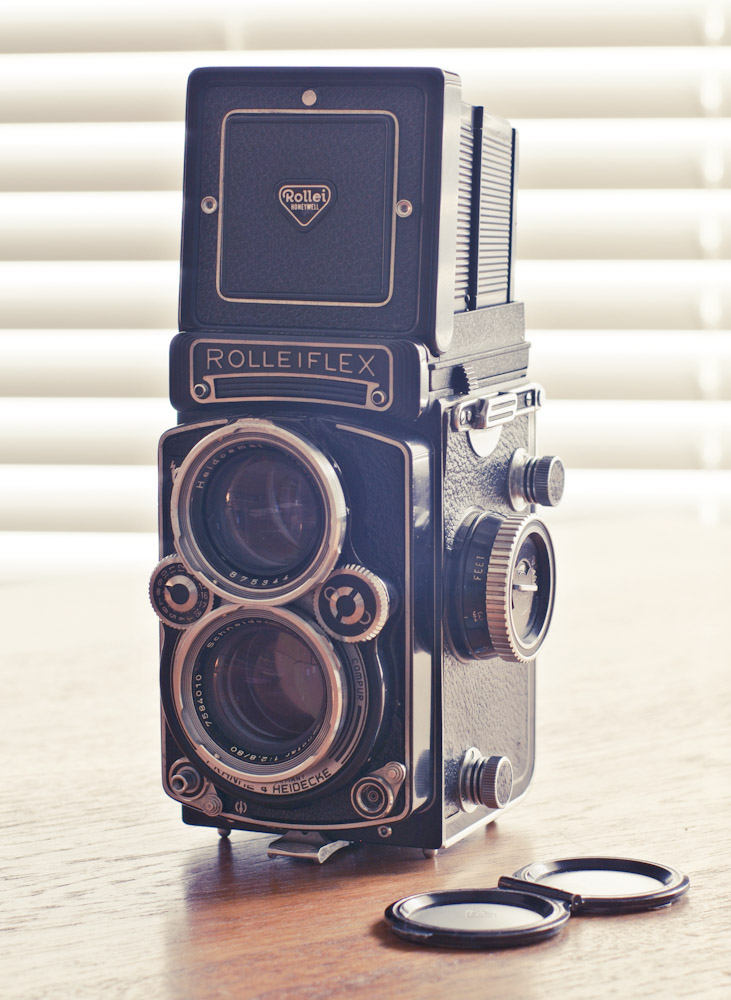
The first Rolleiflex was produced in 1928 with a 75mm f4.5 Zeiss Tessar lens according to “Rollei Photography c1952” by Jacob Deschin. My version however is a 2.8 E3 that was likely produced between 1962 and 1965. My E3 has the Schneider Kreuznach Xenotar 1:2.8/80 taking lens. When handled correctly, as in supported stably and exposed well, the images produced have an amazing amount of detail and depth to them.
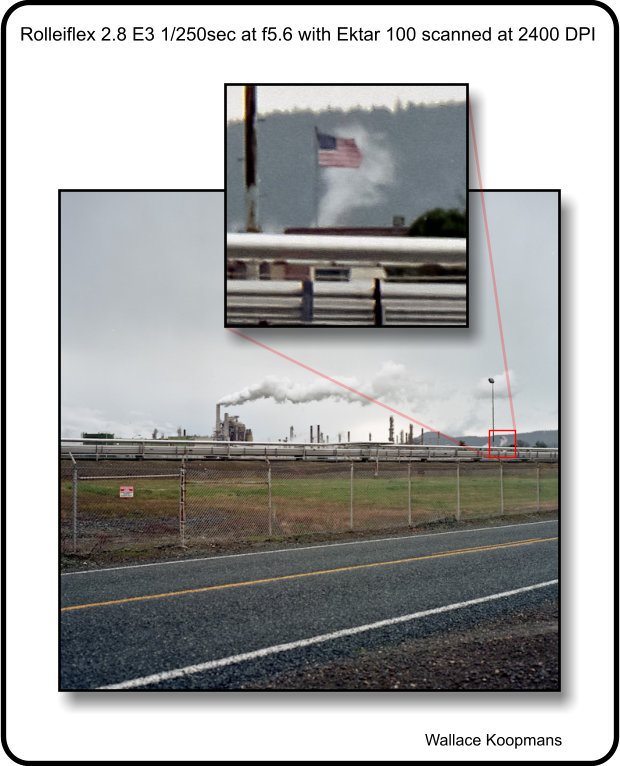
;
Most of these pictures were taken under pretty adverse conditions with high winds and pelting rain forcing me to use a golf umbrella that was eventually turned inside out by a gust. Never the less the camera did not let me down.
;
;
;
A TLR (twin-lens reflex) is in essence two camera together one for viewing the image and one for taking the picture. The image from the viewing lens is formed on the ground glass after bouncing off the internal fixed mirror. This results in an image that is right side up but reversed from left to right. This takes some getting used to because turning the camera one way or the other has the opposite effect on the screen. Because the mirror is fixed, unlike an SLR, there is negligible camera shake as the leaf shutter is tripped. The captured image is recorded on 120 film as 6cm by 6cm, this square format also takes some getting used to for composition but is a nice break from the traditional rectangular formats of most other cameras. Every aspect of this camera exudes quality it is the standard by which I judge other cameras.
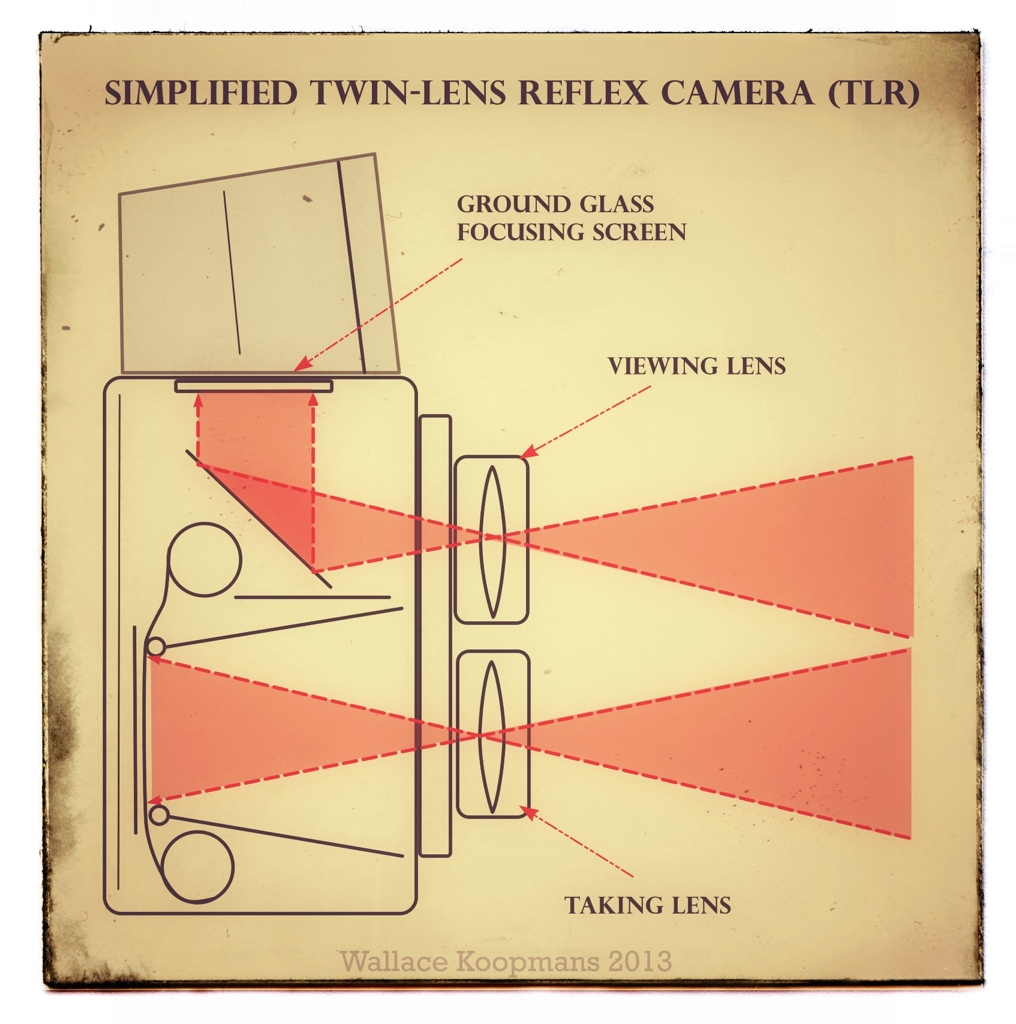
5 comments | tags: film, Photography, Rollei | posted in Cameras, Photography, Processing
Jan
17
2013
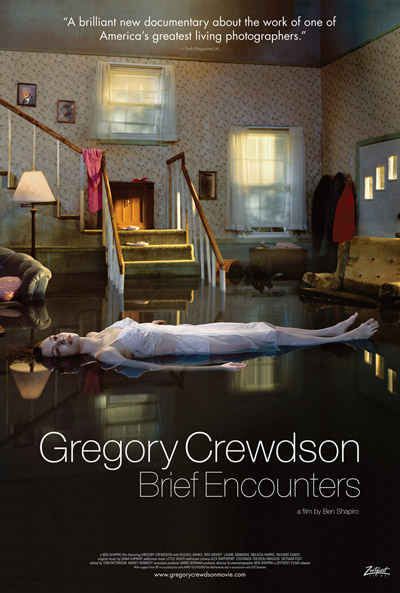
I went to see this documentary at the Vancity Theatre Vancouver this past weekend and wanted to share my thoughts.
Unlike when Toto pulls back the curtain revealing the truth behind the Wizard of Oz, seeing the inner workings of the creation of Gregory Crewdsons images does not dispel the magic. On the contrary seeing the level of effort and detail that goes into making them affords another plane to appreciate them on. Even if you were unaware of what went into constructing an image they have a disturbing quality of seeming plausibly real while setting off the inner warning signals that tell us when something isn’t quite right. As if something is too real to be true.
The documentary film by Ben Shapiro primarily covers the creation of the images of “Beneath the Roses” a body of work created between 2002-2008. It chronicles the making of a few images in great detail, from location scouting to covering vehicle tracks with snow and the placing and direction of the actors within the scene. It is also revealing about the artist himself through his interaction with the public and the crew. While the vision is clearly his he listens to others and incorporates that, making the final result a collaboration. He does not compromise though as at one point a crew member seems to try to convince him that the presence of a white car is okay, Crewdson simply states “never a white car” and does not waver.
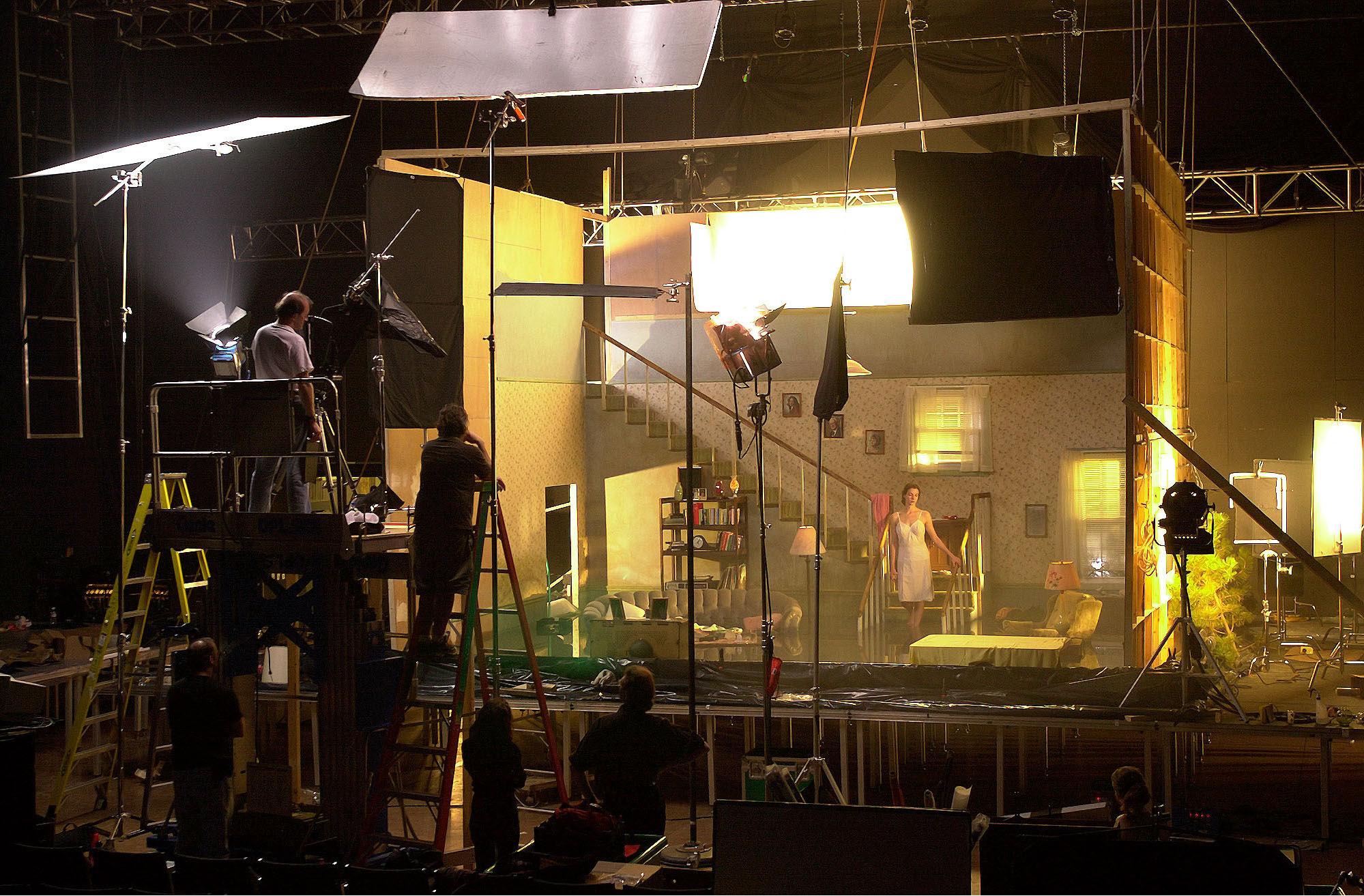
Though shot on large-format film we are allowed a glimpse into the manipulation of the images once scanned into digital form. We see the removal of an unwanted light or the composition of multiple exposures. Crewdson does all of this in the pursuit of creating the perfect moment that never existed.
The 77 minute runtime seemed to fly by, yet enough ground from his career is covered that you feel you could understand how he arrived where he is.
Seeing the images in a moving form allows Shapiro to take us in and out of photographs to levels of detail that literally made the audience gasp. Everyone had the need to share with those around them that they too had just seen the magic. the clarity of the images stands starkly against the documentary footage, much of it shot in lower quality formats, fortunately Crewdson and the documentary are compelling enough that this in no way detracts, it is just a fact of how and when it was recorded.

For more information about the film and where it is playing see Zeitgeist films website
2 comments | posted in Art observations, Photography
Jan
14
2013

Not to be confused with my new Pentax Q or the fictional character on Star Trek the next generation. In the heyday of APS film (insert laugh track here) Fuji released this made in China camera with its 22mm lens that looks more glass bead like than lens like. The striking thing about this camera is its non camera shape, it’s very round. Surprisingly that is what is so appealing about it though, worn around your neck it hangs neatly like a giant medallion and nothing says you are a winner like a purple camera medallion. It did come in other colours but those clearly were not for winners.
No controls no over-rides no problem, take pictures have fun.
1 comment | tags: APS, film, Fuji | posted in Cameras, Photography
Jan
11
2013

The Nikon FG is a small SLR from the early 1980’s similar in size and function to the Olympus OM-1 and the Pentax ME. Like those cameras this camera is manual focus. It does provide a programmed exposure mode as well as aperture priority and full manual. The shutter is electronically controlled so it requires batteries to operate with the exception of 1/90 second and bulb which are mechanical. What the Nikon has over the other two is control over exposure. In addition to the PAM modes it has +-2 stops compensation in half stops and a +2 backlight compensation button. I feel this is a great choice as a compact SLR for anyone wanting to shoot film in addition to digital.
4 comments | posted in Cameras, Photography
















